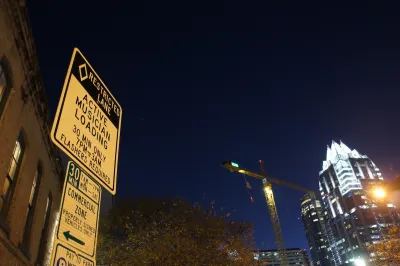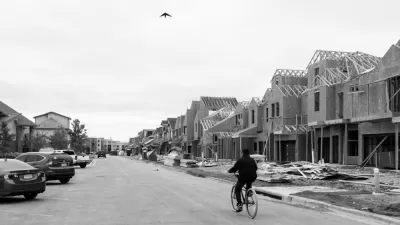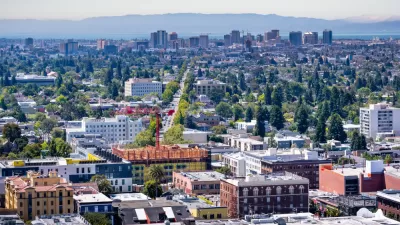Musicians are increasingly hard-pressed to find affordable housing in Austin, a city known for its music scene.

A panel discussion at the South by Southwest (SXSW) festival tackled housing affordability in Austin, zeroing in specifically on the city’s musician population and their struggles to find affordable housing and avoid conflict with noise ordinances and other rules not catered to artists.
As Brianna Caleri explains in CultureMap Austin, the panel, entitled Music Urbanism in Motion: Affordable Spaces to Preserve Austin's Cultural Pulse, discussed housing strategies and ideas from Austin, Philadelphia, and Jacksonville.
The panel participants described examples from their cities, such as programs that activate alleys and other underused spaces for community and music events to reduce vacancy and keep communities vibrant and repurposing old city buses into recording studios and practice spaces. However, “Readers who can smell gentrification a mile away can't be blamed for feeling suspicious of projects to clean up and throw events in these public spaces. How many times has a fun new festival in Austin put a park out of use for a week or more, closed roads, created massive waste, or skyrocketed hotel rates?”
According to panelist Brian Phillips, “We're trying to offer alternatives. There are zero tools. What we're doing is not perfect, but literally like, nobody has any real strategy for how you occupy spaces outside [the market's mainstream].”
For Kady Yellow of Jacksonville, solutions can come from communication and connections between artists and housing developers. “A developer's power is the ownership. Gentrification narrows down to ownership. So when artists get weary of those things ... reach out to [developers], invite them to a venue. Let them see the rawness and the realness and start to speak each other's languages.”
FULL STORY: DIY urbanism: SXSW panel discusses making Austin affordable for musicians

Study: Maui’s Plan to Convert Vacation Rentals to Long-Term Housing Could Cause Nearly $1 Billion Economic Loss
The plan would reduce visitor accommodation by 25,% resulting in 1,900 jobs lost.

North Texas Transit Leaders Tout Benefits of TOD for Growing Region
At a summit focused on transit-oriented development, policymakers discussed how North Texas’ expanded light rail system can serve as a tool for economic growth.

Why Should We Subsidize Public Transportation?
Many public transit agencies face financial stress due to rising costs, declining fare revenue, and declining subsidies. Transit advocates must provide a strong business case for increasing public transit funding.

How to Make US Trains Faster
Changes to boarding platforms and a switch to electric trains could improve U.S. passenger rail service without the added cost of high-speed rail.

Columbia’s Revitalized ‘Loop’ Is a Hub for Local Entrepreneurs
A focus on small businesses is helping a commercial corridor in Columbia, Missouri thrive.

Invasive Insect Threatens Minnesota’s Ash Forests
The Emerald Ash Borer is a rapidly spreading invasive pest threatening Minnesota’s ash trees, and homeowners are encouraged to plant diverse replacement species, avoid moving ash firewood, and monitor for signs of infestation.
Urban Design for Planners 1: Software Tools
This six-course series explores essential urban design concepts using open source software and equips planners with the tools they need to participate fully in the urban design process.
Planning for Universal Design
Learn the tools for implementing Universal Design in planning regulations.
City of Santa Clarita
Ascent Environmental
Institute for Housing and Urban Development Studies (IHS)
City of Grandview
Harvard GSD Executive Education
Toledo-Lucas County Plan Commissions
Salt Lake City
NYU Wagner Graduate School of Public Service




























